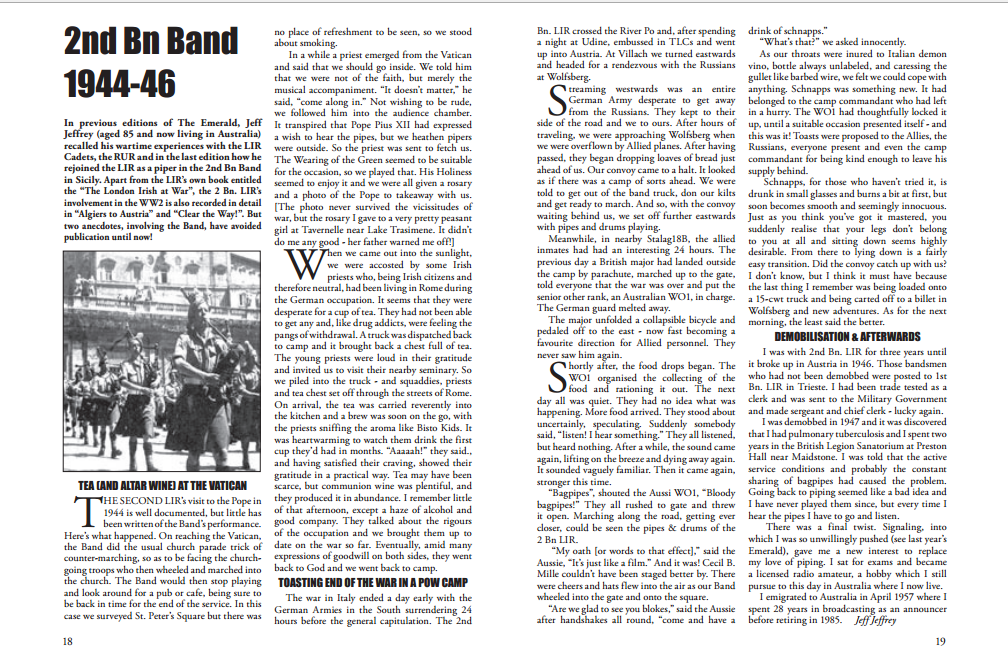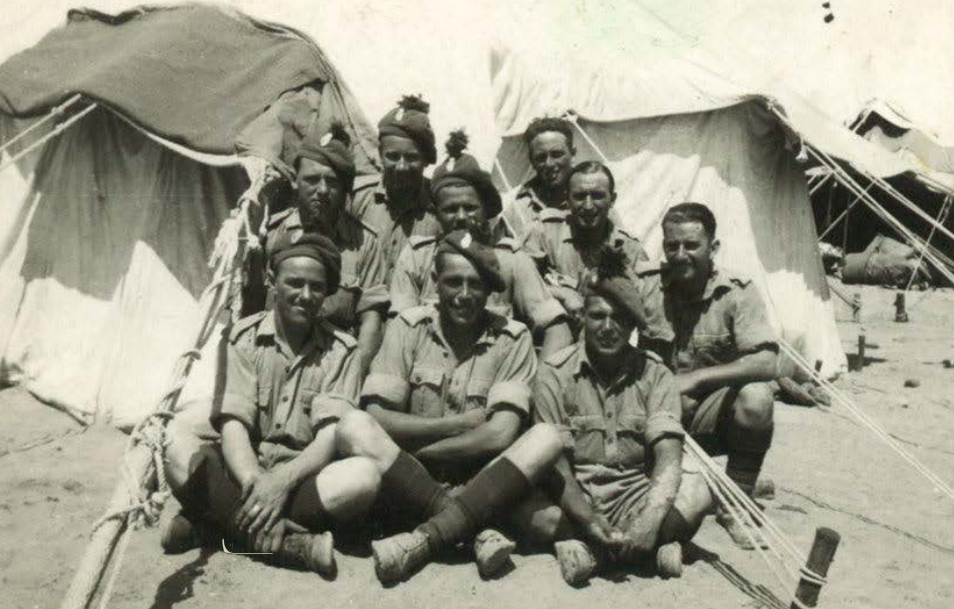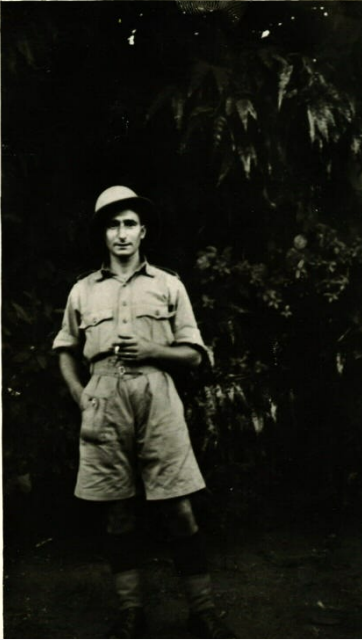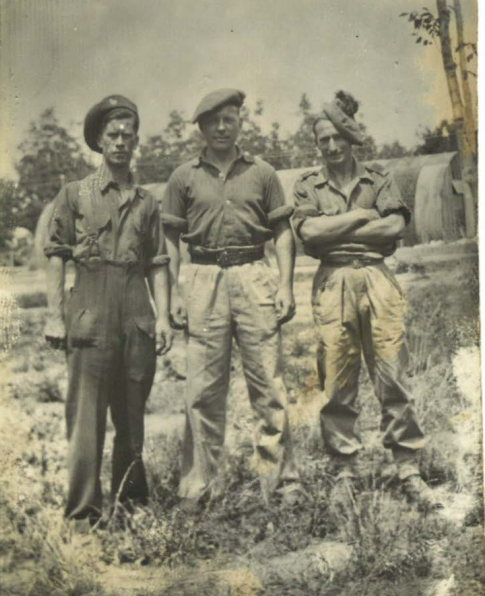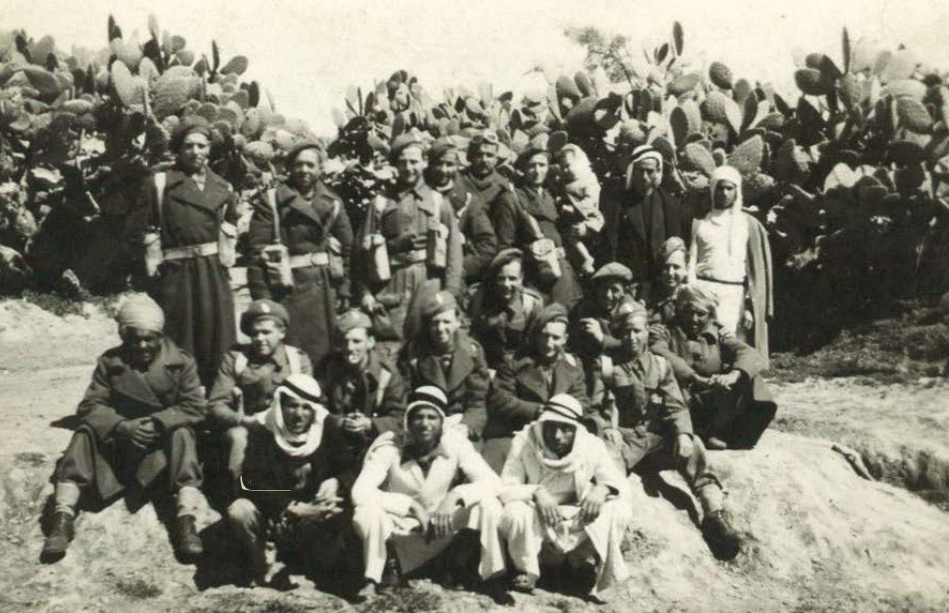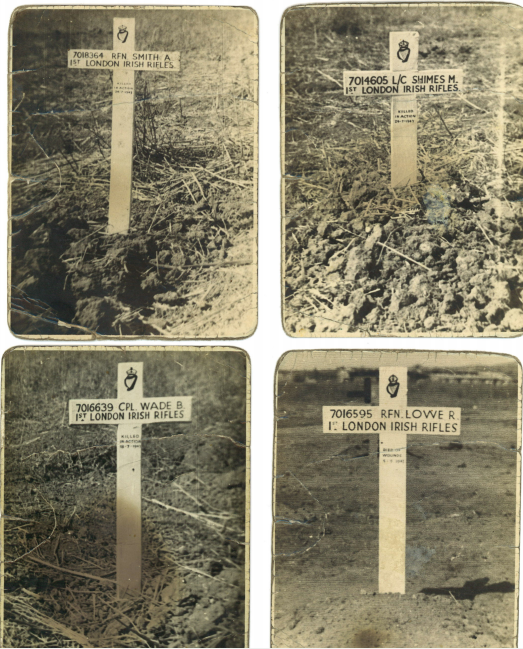Home » Second World War (Page 3)
Category Archives: Second World War
Lance Corporal John Gregory DCM
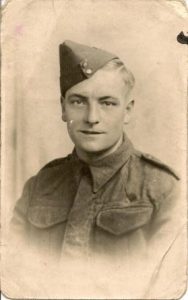
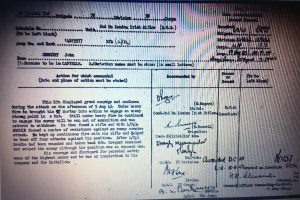
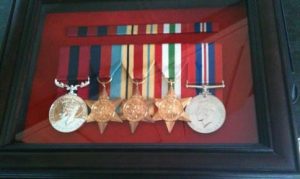
In March 1944, Jack returned to the UK as a result of the news that Joyce was suffering from tuberculosis and he was temporarily relegated to W(T) status and joined the reserves before being permanently given this status. Joyce and Jack went on to have two further children, the youngest born in 1953, and he would continue in the building trade, eventually taking over his father’s business and would lead a very busy life, being an especially keen sportsman. Jack passed away on 8th March 2012, a few months before his 90th birthday.
Glenn concluded his note:
“My father-in-law spoke little about the war, just on the odd occasion – he was a quiet man who considered myself nothing special. We know better.”
We do indeed sir.
Quis Separabit.

Rifleman George Hurdley with the 2nd Battalion, 1939-45.
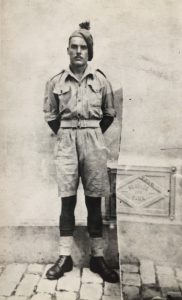
We have received a note and some great photos from the son of Rifleman George William Hurdley, who served with the 2nd Battalion from 1939 to 1945.
In his note to us Tony Hurdley said:
“My father’s number was 7014849, and he enlisted on 27th April 1939 and was then called to the colours at the outbreak of war on 2nd September 1939. George was from Enfield and was recruited at Chelsea. He was born in 1917 and married Irene and they had two children and five grandchildren.”
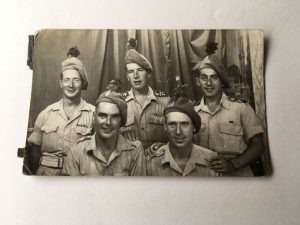
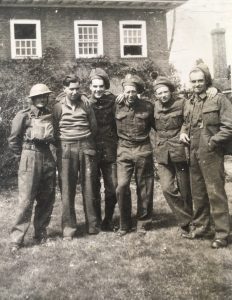
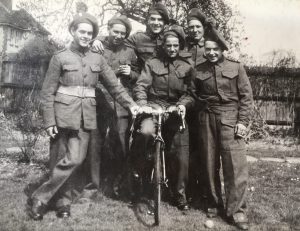
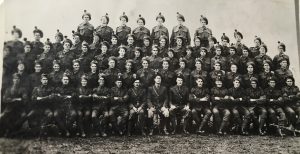
Memorial Plaque Unveiling in Piedimonte Etneo.
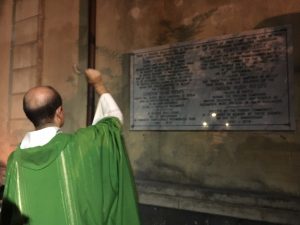
The Regimental Association was honoured to attend a Commemorative event in the town of Piedimonte Etneo on the north eastern slopes of Mt Etna that took place on the exact 75th anniversary of the date when men of the 1st Battalion, London Irish Rifles entered the town in early September 1943.
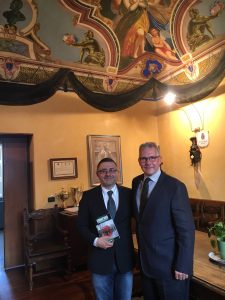
The Chairman, Major Peter Lough, and Association Members, Richard and Edmund O’Sullivan, whose father served with the 2nd Battalion in Sicily, attended a Service of Remembrance at the town’s Chiesa Madre before a marble plaque was blessed by the parish priest, Dom Mario, outside the church. The plaque honours the memory of the 90 members of London Irish Rifles and numerous Sicilians civilians who died during the fighting on the island.
The 1st Battalion London Irish Rifles would stay in Piedimonte for over a month from 8th September to 10th October 1943 when they en-shipped for Naples. A witness to the events of 1943, Angelina Vitale, was on hand to tell us of the day when she and her family welcomed the London Irish into her home town as liberators and garlanded them with flowers.
It is really quite remarkable, that in a small town in Sicily, there are now two memorials dedicated to the men of the London Irish Rifles – entirely funded by the local townspeople.
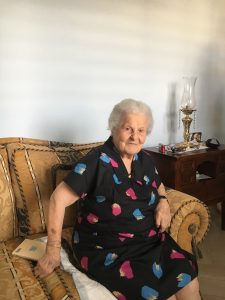
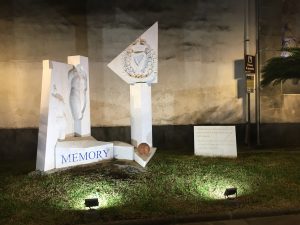
Thanks are due to Dom Mario, Mayor Ignazio Puglisi, Deputy Mayor Giuseppe Pagano, the President and Members of the Town Council and all the townspeople of Piedimonte Etneo for their fantastic welcome again.
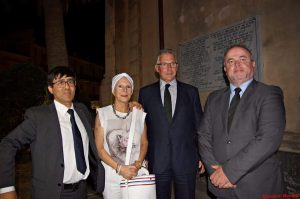
The Association Chairman’s speech is reproduced in full below:
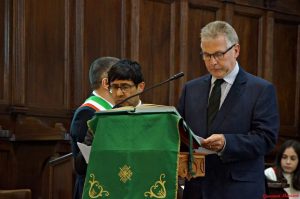
I am delighted to visit your lovely town again. This is my third visit here to Piedimonte and I would like to thank you all for your usual most hospitable welcome. Today’s commemorative event is a truly remarkable one for our Regimental Association.
As you know, 75 years ago this week, the 1st Battalion of the London Irish Rifles arrived in this town after a very difficult period when they were embattled on the east coast of Sicily during July and early August of 1943. On 8th September 1943, the men of the London Irish Rifles moved from the coastal area near Fiumefreddo to the cooler climes of this town. It was a very welcome move and it is perhaps not surprising that our Regimental history stated that: “Piedimonte was the most comfortable place that the Battalion had stayed at since leaving England in August 1942…” Some of you will remember that day when London Irish Riflemen, wearing what some of you thought were “orange skirts”, entered the town – I can certainly see Angelina, who did indeed witness those historic events.
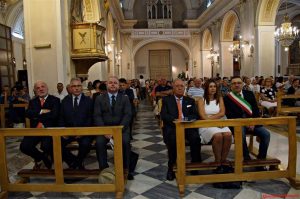
Two weeks after the London Irish Rifles arrived, a Parade and Service of Remembrance would be held here in the town to commemorate one of our Regiment’s most famous battles during the Great War: the Battle of Loos that took place in northern France. The Commanding Officer of the 1st Battalion London Irish Rifles, Lt-Colonel Ian Good, addressed the parade in Piedimonte that day.
Our Regimental records noted that after the parade:
“the Battalion marched to their respective services, both Roman Catholic and Anglican, which were held for the remembrance of men of the Battalion who fell in the battle of Loos and for those who fell in the fighting in Sicily.” One of the services, held here at this church at that time, was conducted by Father Denys Rutledge, along with our own battalion’s padre, Father Treacy.
At this point, I would like to reflect on the memories of those desperately difficult days in September 1943. Both the Riflemen and the people of Sicily had suffered so much over the previous months, and it was quite fantastic that they could all come together in fraternal friendship during the 5 weeks that the town of Piedimonte hosted their visitors.
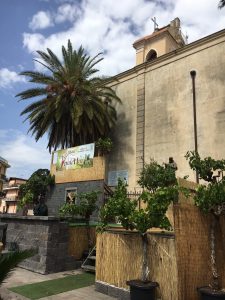
I am sure that the moments of deep prayer and solemn contemplation and reflection were directed to both the military combatants of all countries and the civilians of Sicily, who were sadly caught up in the fighting on the island. I am equally sure that the events of the day would have been of great spiritual comfort to everyone and would indeed have contributed greatly towards a continuing period of close mutual friendship in the town until the London Irish reluctantly left Piedimonte on 10th October.
As I say, 25th September 1943 was a most important day of reflective contemplation that has been mirrored at the Service of Remembrance here today. It is a most remarkable thing that I can now look out across to your own War Memorial marking the sacrifices of the Great War, the Memorial that is dedicated to men of the London Irish Rifles and can also stand close to the Commemorative Plaque.
I cannot thank you enough for such an incredibly generous and moving occasion that will further underpin the deep friendship between the London Irish Rifles Association and the people of Piedimonte Etneo, both today and far into the future.”
The 38th (Irish) Brigade in the Second World War
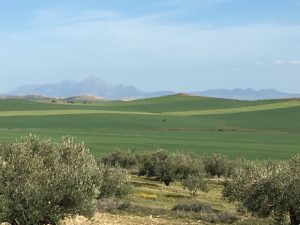 To mark the 75th anniversaries of the London Irish Rifles’ remarkable fighting role during the Second World War, Association members, Richard and Edmund O’Sullivan, have commenced a project to film the route that their father, CQMS Edmund (“Rosie”) O’Sullivan followed with the 2nd Battalion London Irish Rifles all the way from Algiers to Austria. The filming schedule will comprise several parts and Part 1, which covers the Tunisian campaign, is available online, with further filming taking place in Sicily and across mainland Italy over the next two years.
To mark the 75th anniversaries of the London Irish Rifles’ remarkable fighting role during the Second World War, Association members, Richard and Edmund O’Sullivan, have commenced a project to film the route that their father, CQMS Edmund (“Rosie”) O’Sullivan followed with the 2nd Battalion London Irish Rifles all the way from Algiers to Austria. The filming schedule will comprise several parts and Part 1, which covers the Tunisian campaign, is available online, with further filming taking place in Sicily and across mainland Italy over the next two years.
In October 1941, Winston Churchill had sent the following memorandum to the Secretary of State for War: “I shall be glad to have an expression from the War Office on this suggestion. We have Free French and Vichy French so why not Loyal Irish and Dublin Irish.”
Such a formation, 38 (Irish) Brigade, was indeed created during January 1942 in line with Churchill’s wishes and comprised three infantry battalions: the 1st Bn Royal Irish Fusiliers, the 6 Bn Royal Inniskilling Fusiliers and the 2nd Bn London Irish Rifles and it would leave the UK in November 1942 as part of the follow up force to exploit the initial Allied landings (‘Torch’) in North Africa. The brigade would gain an unrivalled reputation for battlefield excellence from the time that they arrived in Tunisia in December 1942 until they spearheaded the advance through the Argenta Gap that led to final victory in Italy at the end of April 1945.
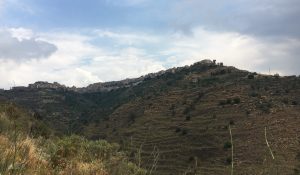 Along with the rest of 78th (Battleaxe) Division, 38 (Irish) Brigade would often be called forward to break the most stubborn parts of the German defensive lines and would suffer thousands of casualties many of whom are buried at various CWGC Cemeteries in North Africa and Italy. It is a truly remarkable story and one which we look forward to sharing with you over the next two years.
Along with the rest of 78th (Battleaxe) Division, 38 (Irish) Brigade would often be called forward to break the most stubborn parts of the German defensive lines and would suffer thousands of casualties many of whom are buried at various CWGC Cemeteries in North Africa and Italy. It is a truly remarkable story and one which we look forward to sharing with you over the next two years.
Faugh a Ballagh
Nec Aspera Terrent
Quis Separabit.
Part 1 can be viewed here.
Part 2.
Lieutenant Terence Barry 1921 – 1943
We have just been contacted by Association Member Greg Barry, who has passed us some further information about his uncle, Lieutenant Terence Barry, who died on 5th December 1943, while serving in Italy with the 1st Battalion, London Irish Rifles.
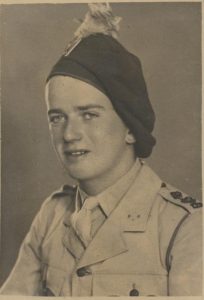
Terence Barry was born on 6 June 1921, the second son of Patrick Barry, an admiralty clerk, and his wife, Margaret, both of whom originally hailed from County Cork, Ireland.
Initially educated at St. Edward’s Roman Catholic School, Sheerness, Terence won a scholarship to Borden Grammar School in September 1932. He proved to be an outstanding scholar, securing a Higher School Certificate – equivalent to today’s A Levels – in no fewer than four subjects, a feat for which his name was inscribed on the Honours Boards in the Old Hall. Outside of his academic studies, he was appointed a prefect and vice-captain of Swale House. He left to read Modern History at Merton College, Oxford, but his university career was soon interrupted by the exigencies of the Second World War: while still a student, he served in the University’s Senior Training Corps and then enlisted into a territorial battalion of the Royal Fusiliers.
Awarded second class honours in the first part of his degree, Terence was selected for officer training, emerging five months later with a second-lieutenancy in 1st Battalion London Irish Rifles (Royal Ulster Rifles). The battalion subsequently received orders to prepare for overseas service and, while on embarkation leave, Terence took the opportunity to visit his former teachers at Borden Grammar School. This was an event that one young schoolboy, Desmond Keohane, could vividly remember some fifty years later: in a letter to The Maroon, he recalled how “Terry Barry, a prefect in our first term at Borden, came into our English lesson with Mr Tempany in Room 3, resplendent in his officer’s uniform, with a magnificent plume (hackle) in his beret (caubeen)”
Terence and his comrades were posted to Iraq in August 1942, and remained there for six months guarding the oilfields until ordered to proceed to Egypt in April 1943. Three months later, the battalion embarked for Sicily, seeing action here for the first time in bloody fighting south of Catania. Following the liberation of the island, Terence and his comrades arrived on the mainland of Italy in October 1943 to join the Allies’ push north towards the “Gustav Line”, a set of formidable German defensive positions that ran across the Italian Peninsula to the other, blocking any advance to Rome. One of the outer bastions of these positions was Monte Camino, rising some 2,700 feet above the surrounding valleys. Following the failure of a previous attempt to secure the mountain, the task fell to 56th (London) Division (which included the 1st Battalion, London Irish Rifles). The new assault on Camino began on 3 December 1943 and, after a number days of bitter fighting, it was eventually abandoned by the German forces.. A number of men from the London Irish Rifles lost their lives during the attacks, one of whom was Terence, killed by enemy mortar fire, while leading a patrol on 5 December 1943. He was twenty-two years of age.
Posthumously mentioned in despatches for his gallant conduct, news of Terence’s death eventually reached Borden Grammar School and Kenneth Sears, a sixteen-year-old schoolboy at the time, clearly remembers the shock with which this information was received by the school community. Terence was initially buried in Mieli, a small village at the foot of Monte Camino, before being re-interred in Cassino CWGC War Cemetery; his name is also commemorated on the war memorials of Borden Grammar School, Merton College, Oxford, at the London Irish Rifles in Camberwell, and in Sittingbourne.
‘The London Irish at War’ would add their own tribute to the memory of Terry Barry
“The London Irish were fairly fortunate in their casualties, which totalled about eighty. Among the killed was Lieutenant Terry Barry, a capable and gallant officer…”
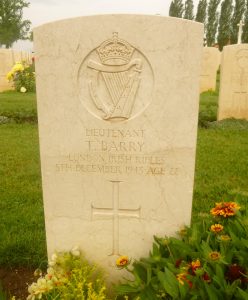
Quis Separabit.
Piper Alfred Jeffrey 1923-2018
We have received notification of the recent death of Piper Alfred (‘Jeff’) Jeffrey who lived in Perth, Western Australia.
Piper Jeffrey served with the 2nd Battalion in Italy and Austria from 1943 to 1946 and an excerpt of his memoirs were published in a recent Emerald.
You can read a full version of Alfred’s memoirs by following this link created by George Willis.
Alfred had written to us at the London Irish Rifles Association earlier in the year with the following comments:
“In retrospect, we all went through tremendous experiences and emerged if not unscathed, then not too badly ‘scathed’. In view of the wonderful replies to my email, I have decided to remain in touch. This means that when I go, there will be no warning. You will simply stop getting replies from me.
I should tell you that, although I was called Jeff for broadcast purposes, my name is really Alfred, and I prefer it to Jeff. That makes three of us named after the only English king ever to be called “the Great”.
Thank you for The Emerald; I am looking forward to it.
Best wishes to everyone. Alfred Jeffrey.”
Quis Separabit.
Alfred Cook’s Photographs from 1942/43
Many thanks to Sergeant Alfred Cook for sharing these photos that were taken while he was serving with 1st Battalion, London Irish Rifles during 1942 and 1943 in Iraq and Egypt.
